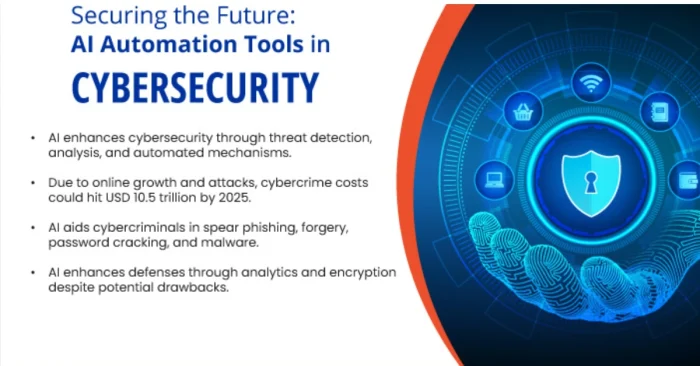Overview
AI tools for cybersecurity teams help organizations detect, prevent, and respond to digital threats faster and more efficiently. These tools use machine learning and behavioral analysis to identify suspicious activity, malware, and vulnerabilities. AI automates threat detection, incident response, and risk assessment, reducing manual monitoring and response times. By analyzing large datasets in real-time, AI predicts potential attacks and recommends proactive measures. Whether for enterprises or small businesses, AI-powered cybersecurity ensures continuous protection, minimizes data breaches, and strengthens security posture. Teams can focus on strategic defense while AI handles repetitive and complex threat analysis.
1. AI for Threat Detection
AI monitors network traffic, user behavior, and system activity to detect anomalies or potential cyber threats. It identifies malware, phishing attempts, and unusual access patterns, allowing teams to respond quickly and prevent attacks.
2. AI in Vulnerability Assessment
AI tools scan systems, applications, and networks for weaknesses. They prioritize risks based on potential impact and suggest mitigation strategies, helping cybersecurity teams strengthen defenses effectively.
3. AI-Powered Incident Response
AI automates responses to security incidents by isolating affected systems, blocking malicious activities, and providing actionable guidance. This reduces response time and limits the impact of attacks.
4. AI in Malware Analysis
AI analyzes files and code to detect malicious patterns, identify new malware variants, and predict future threats. Automated analysis helps teams respond faster and update security measures proactively.
5. AI for Threat Intelligence
AI tools collect and analyze global threat data from multiple sources. They provide real-time insights, alerts, and predictions, enabling teams to stay ahead of emerging cyber threats.
6. AI in Risk Assessment
AI evaluates organizational risk by analyzing vulnerabilities, threats, and potential impacts. It provides recommendations for prioritizing security measures and improving overall cybersecurity posture.
7. AI for Network Security
AI monitors network activity, detects suspicious behavior, and automatically blocks unauthorized access. It ensures continuous protection of critical infrastructure and sensitive data.
8. AI in User Behavior Analytics
AI tracks user actions and detects deviations from normal behavior. It identifies insider threats, compromised accounts, or unauthorized access, enhancing internal security monitoring.
9. AI for Phishing Prevention
AI identifies phishing emails and malicious links using pattern recognition and historical data. It warns users and blocks potential attacks, reducing the risk of data breaches.
10. AI-Powered Security Reporting
AI generates detailed reports on threats, incidents, and system health. Analytics provide actionable insights, helping cybersecurity teams improve strategies, allocate resources effectively, and maintain regulatory compliance.
(FAQs)
Q1: Can AI replace cybersecurity experts?
No. AI assists with detection and response, but human expertise is essential for strategic decisions, incident handling, and complex threat analysis.
Q2: Are AI cybersecurity tools expensive?
Costs vary by platform, but many AI tools offer scalable solutions suitable for small to large organizations.
Q3: Do AI tools improve threat detection accuracy?
Yes. AI reduces false positives, identifies new attack patterns, and provides real-time monitoring, improving overall detection accuracy.
Learn More About AI Course https://buhave.com/courses/learn/ai/
















